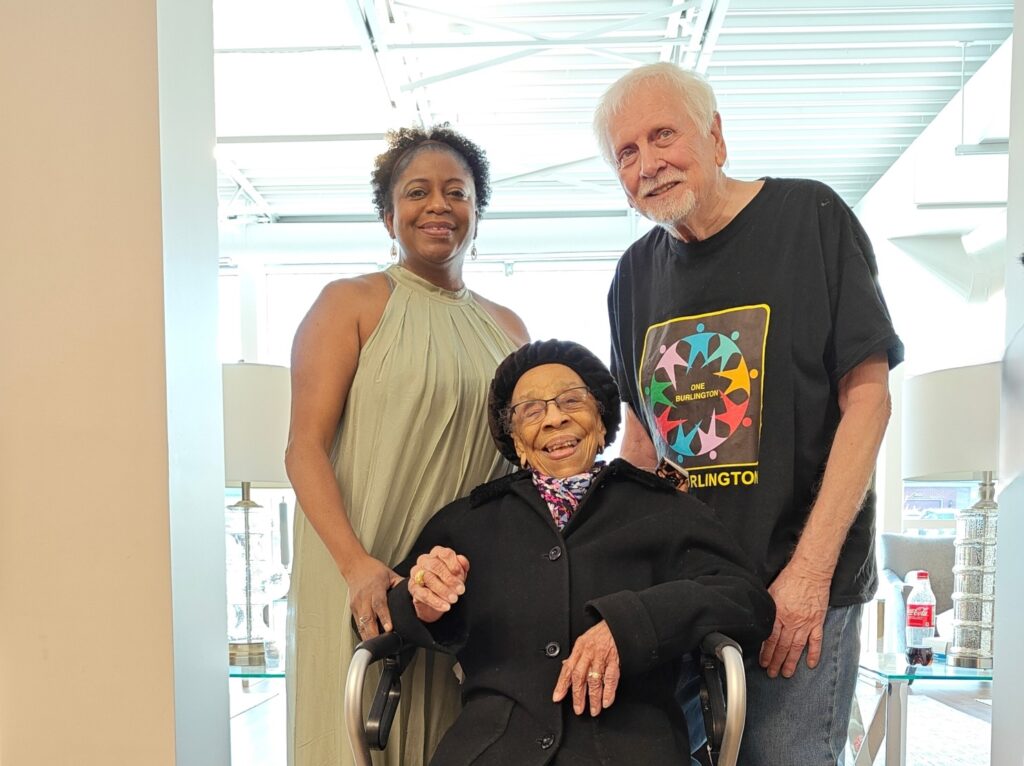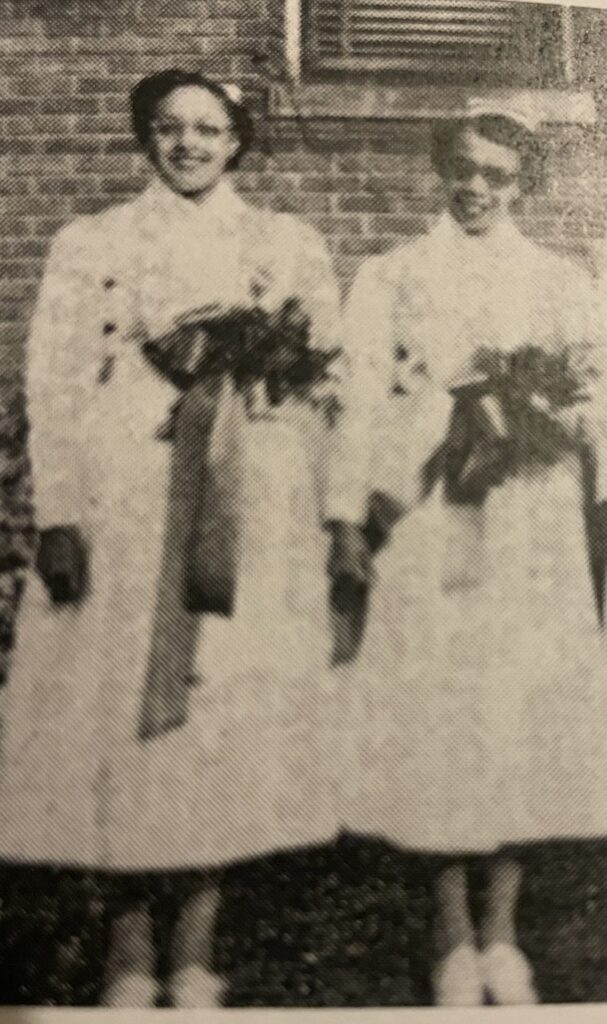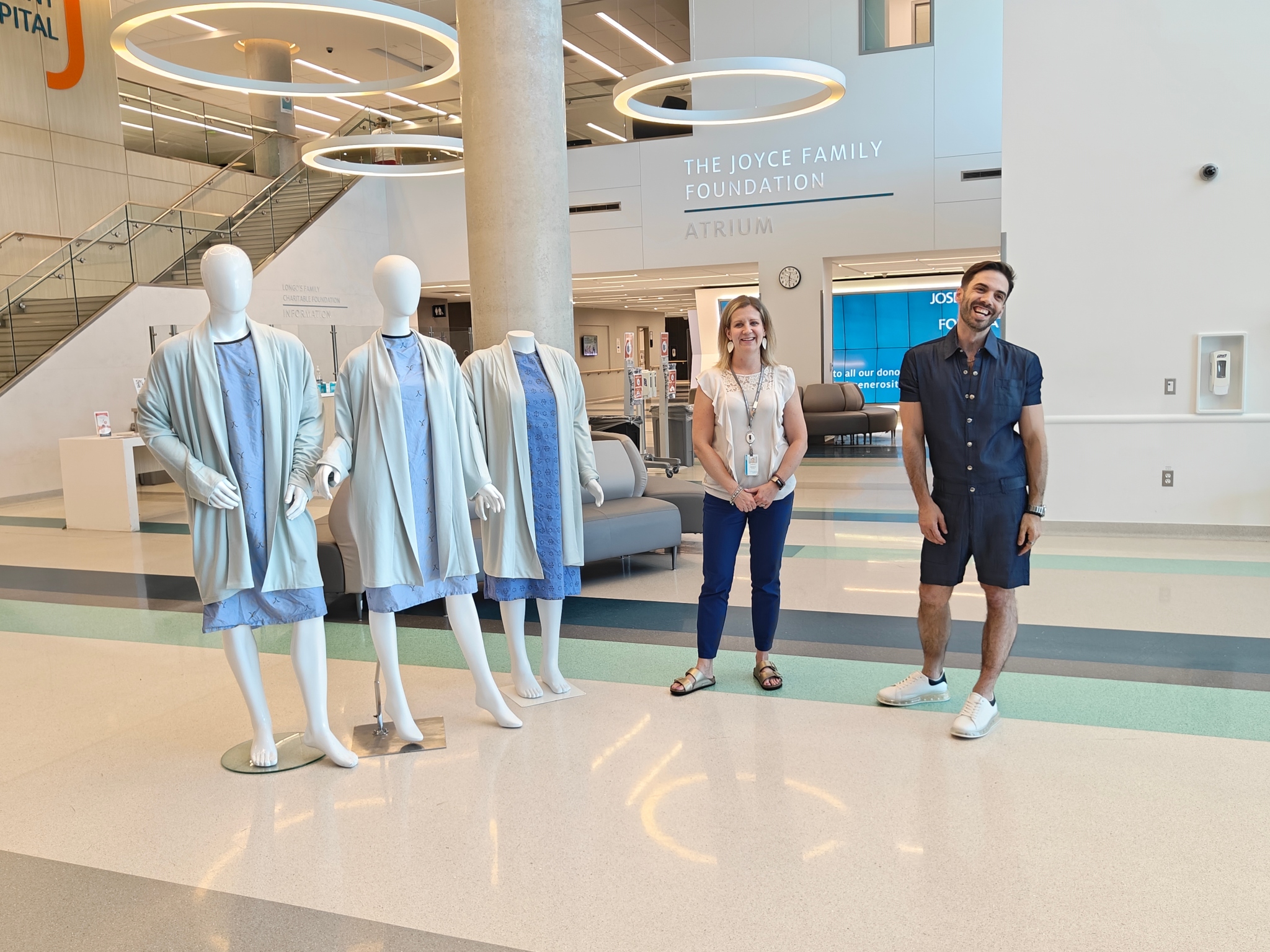By Kyle Marshall, Local Journalism Initiative Reporter
Tracy Cain has been tracking and sharing her ancestry for the last few years, but recently she discovered her connection to a local legend in Burlington’s Black community.
Cain tells the story of her family history to audiences of all ages with a mix of song and storytelling while also educating her audience on Black Canadian history. She offers her family history presentations year-round for school and other interested groups; indeed, Cain was in Burlington this February with “And Then What Happened: Untold Stories of the Underground Railroad with Songs and Stories by Tracy Cain,” presented by ONE Burlington.
Her whole life, Cain has been a singer. And over the years, she has been invited to many events focused on the Black community to sing old spirituals, for instance, and has always done things to celebrate Black history.
But her one-woman show is the result of more recent research into her ancestors.
Cain has only been deep-diving into her family history since around 2021 when her husband, Robbert Kramer, who had already had his DNA analyzed through Ancestry.ca, suggested doing the same for his wife. Cain is a fifth-generation Black Canadian, on both her mother’s and father’s sides of the family.
At that point, Cain might have known some names of her ancestors, but where they lived or how they came to Canada, she hadn’t the slightest idea.
And then, as Cain says, the floodgates “just opened up.”
“I always said that I had a lot of family, but it was such an understatement once the results started coming in,” she said. “And at this very moment, I can tell you on Ancestry, I have approximately 12,515 matches.”
And that is just for those who have done their DNA with Ancestry, but she is getting more matches all the time. Still, the more she digs into her family, the more she discovers just how connected she is with different communities and the families in them.
And then, a pretty big name showed up at her door and wanted to know more.
Somehow, The Discovery Channel got wind of her story and featured her ancestor Josephus Mallott in their four-part documentary series, titled Underground Railroad: The Secret History.
After that, she started to explore Newspapers.com, an offshoot of Ancestry that lets users explore more than 956 million newspapers dating all the way back to the 1700s.
And that opened up rabbit hole after rabbit hole, providing her with so much more information about her ancestors.
“So while my husband loves to do the census and the archives and digging and planning those things,” Cain explained, “I’m a person that loves to put the flesh on the bones and find the stories because then it starts to feel real to me and I can start to relate more to who these people were and how their lives were and what they did or where they went to church or communities that they built and all that fun stuff.”
When Cain was growing up, there wasn’t anything in the history books about Black Canadian history and it was not taught in schools; she wants her boys, Travin and Wesley, to understand their ancestry so that they won’t have to dig as hard as she has had to dig and to be proud of their heritage.
While her parents did tell her that she was a fifth-generation Black Canadian, she had no idea what exactly that meant, or that her ancestors had a big hand in shaping what the landscape of Canada would look like.
During his search, Cain’s husband discovered that her family lived in Canada before it even became a dominion, with her first documented ancestor dating back to 1806.
“That’s how it started,” she said.
Cain notes that rather than the typical six degrees of separation between people, the Black Canadian community seems separated by a mere two degrees. The second half of this story illustrates just that phenomenon.
When Cain was speaking at her February presentation in Burlington, she wanted to honour a Burlington resident who she called a “living legacy”: 98-year-old Ona May Allen.

Cain had heard Allen talking on a podcast about a woman she knew named Naomi Cooper, who happened to be one of Cain’s great aunts. This immediately piqued Cain’s interest, as she had never been able to find any information about Cooper.
Cain later met Allen at an event in North Buxton, the historically Black community where people who were formerly enslaved found safe haven in Canada. Some of Cain’s family members had lived in North Buxton; Allen grew up there.
Allen lives by herself in her south Burlington house, which she says is possible because she has help from friends and neighbours. “They’re angels,” Allen says. Perhaps even more remarkable than living on her own, though, is Allen’s prodigious memory, which would put to shame that of someone fifty years younger than her.
Allen was born in 1925 in Raleigh Township in North Buxton to Gordon Admiral Morris and Ida Louisa Agnes Travis and has lived in the southern Ontario area her whole life. Her father’s family came through Niagara to Canada and her mother’s through the Underground Railroad.
Cain interviewed Allen on camera, clips of which she showed in Burlington back in February. For Cain, speaking to Allen about Naomi Cooper was a beautiful experience.
“It was lovely for her to talk about who this woman was and how my aunt made a difference in her life by telling her things and what she should do going forward,” Cain said. “It was wonderful because part of my family is from the North Buxton area, the Windsor/Chatham area. I wanted to honour Ona and I did that at my presentation in Burlington.”
And because of that amazing memory of Allen’s, Cain was able to capture some of Allen’s fascinating, beautiful — and sometimes heart-breaking — memories on video, from as far back as Allen’s childhood.
Allen described, for instance, people travelling by horse and buggy when she was a small child in North Buxton, and playing baseball with the other children using whatever they could find as bats and balls. She spoke about the importance of the church in the community, reminiscing over the sweets she and the other children would be given if they behaved during services.
“What we wouldn’t do to get one of those sweeties!” Allen said.
But she also recalled her experience trying to find a secretarial job in Chatham, after graduating from Canada Business College’s secretarial course.
In the interview, Allen remembered the blatant racism of her early years: “Every time there was an opening, we always read all the help wanted ads, [and we would hear] ‘It’s already taken, it’s already taken,’ and shut the door in your face. I became very discouraged.”
This was somewhat surprising to Allen, because back in North Buxton, where she had grown up on a farm, the farmers would help each other whenever needed, regardless of whether they were Black or white. They all got along because that was all they had, that was the community.
She ended up back in North Buxton, doing seasonal labour. After World War II, though, a training opportunity came up, in the form of a registered nursing assistant course, funded by the government.
Allen and her friend Cora Prince went off to Hamilton for the course, then worked at Hamilton General, and later, after both young women faced more prejudice at Hamilton General, at the Mountain Sanatorium.

There, their hard work was noticed, and they were encouraged to obtain their full nursing certifications. After graduating from Chatham General and working there for a year, Allen went back again to Hamilton General. In Hamilton, Allen met her late husband, Alphonso Allen, with whom she had one son.
Allen, alongside her friend Cora Prince, has the distinction of being one of the first Black nurses in Ontario. She also volunteered at St. Joseph Brant Hospital for 20 years, right up until she was 85 years old.
“Ona is amazing,” Cain states.
But the story doesn’t end there.
About a month ago, Cain was notified of yet another Ancestry DNA match and after looking at the person’s picture, she thought that they looked a lot like Allen. So Cain enlisted the help of Allen’s nephew.
The match was none other than Allen’s first cousin, making Cain and Allen cousins themselves. Not only that, but Allen is Cain’s cousin on both her father’s and mother’s sides.
“There’s a connection to my father’s side through blood and then through my mother’s side through blood. And those descendants married each other. And then Ona came from that, and then me,” Cain explained.
“It’s just wild.”
Cain went to Allen’s house for dinner last month after learning of their familial connection, and Allen’s nephew brought out the Travis family tree to show Cain exactly how she is connected to them.
He then told Cain a story about the Travis family that Cain had read in a book before, but at the time, she didn’t know of her connection.
Cain intends to find out more about her connection to Allen, who adores Cain’s husband and has already invited her back to her home.
“She’s like, ’Tracy, anytime, call me, come over. You don’t have to even call. Just come on over and stop in.’ And she has a lot of people that call and stop when you’re over there. She’s visited a lot. And she’s well taken care of because she’s taken care of so many people in her life.”
“Ona has done a lot for a lot of people, and she needs to be honoured. She is a legend. She’s a living legacy.”





